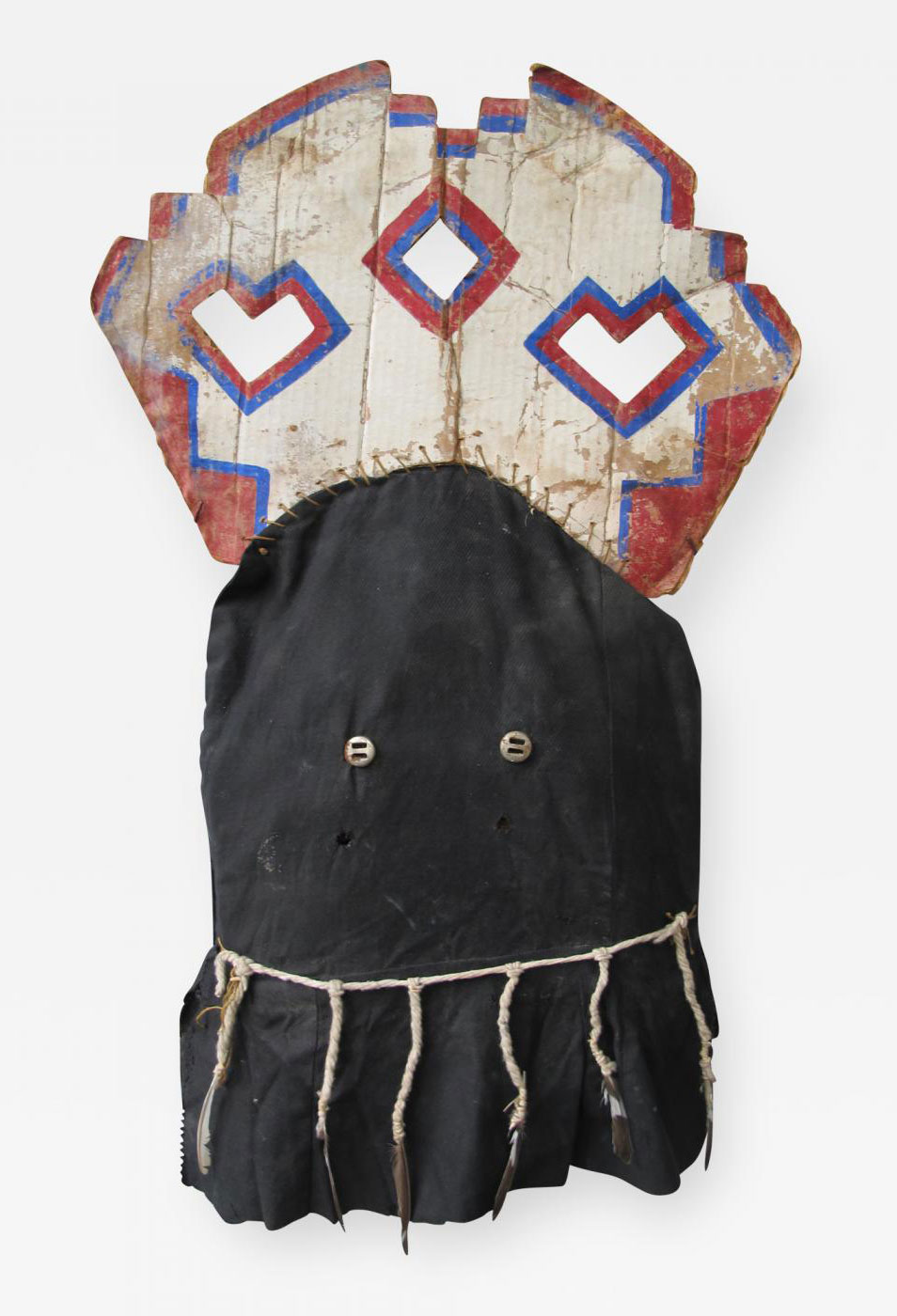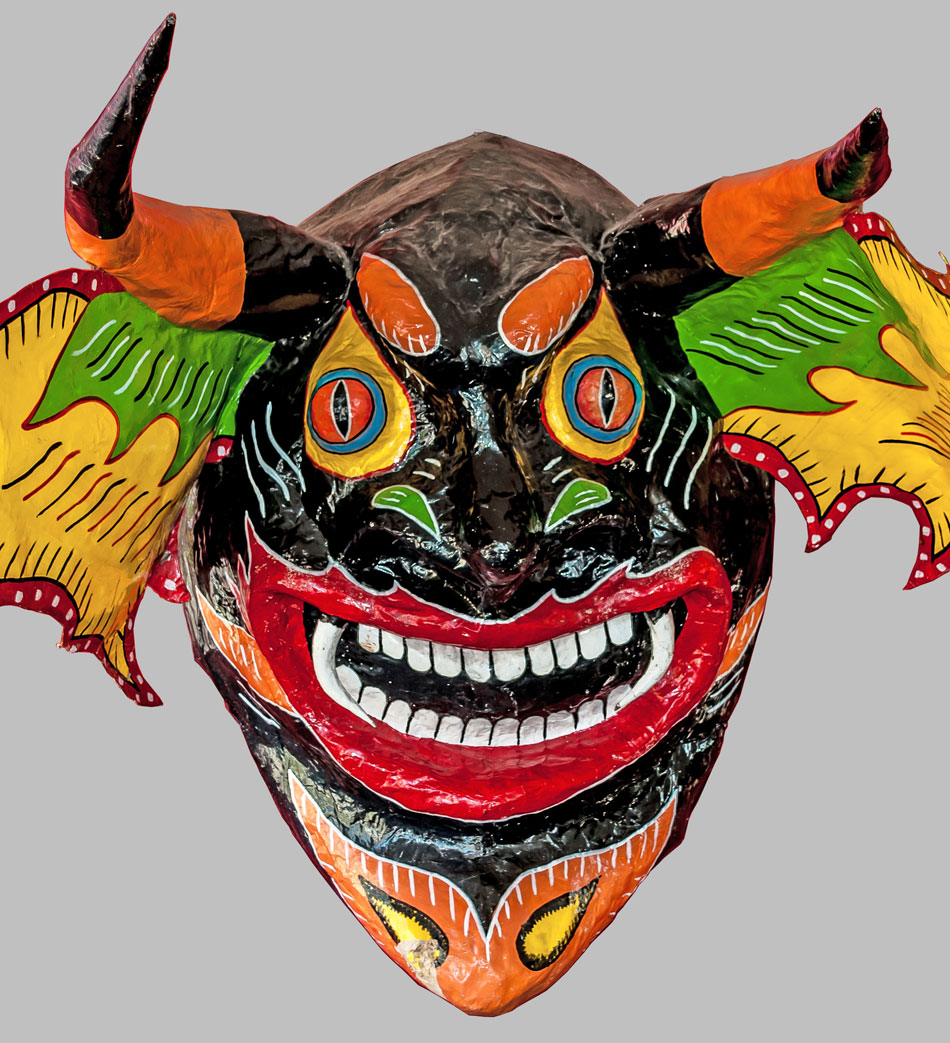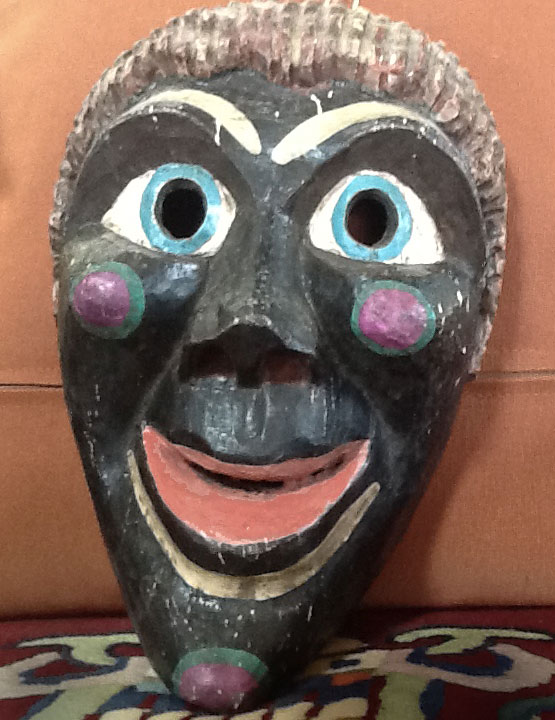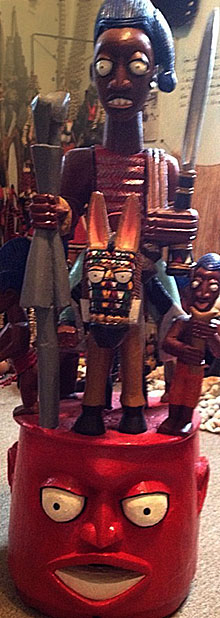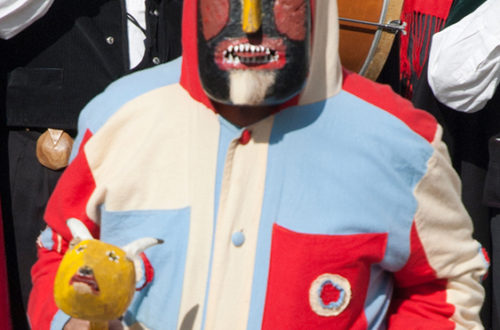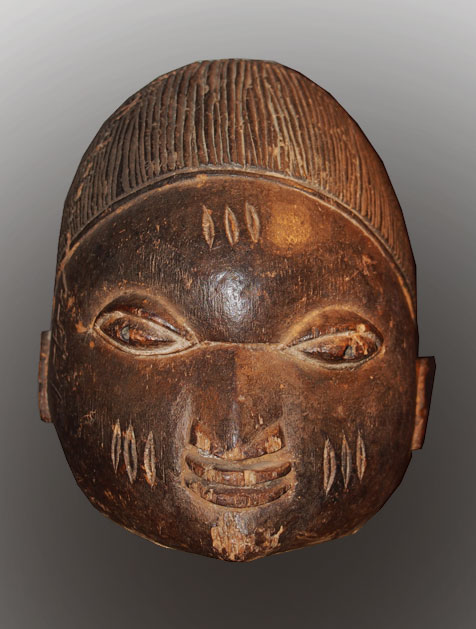 This Apache Gaan dance mask consists of a black cloth head cover with small eye openings and metal outer ‘eyes’. The top tablita part of the dance mask is inventively made of corrugated cardboard with paint. On the lower portion is circular cotton cord with drops holding small feathers. This mask has definitely been danced. It is about 25 inches high.
This Apache Gaan dance mask consists of a black cloth head cover with small eye openings and metal outer ‘eyes’. The top tablita part of the dance mask is inventively made of corrugated cardboard with paint. On the lower portion is circular cotton cord with drops holding small feathers. This mask has definitely been danced. It is about 25 inches high.
The Apache people are generally thought to be a single tribe of Native American’s, but in actuality, the Apaches are an assimilation of various Apachean tribes that are thought to be a subgroup of Athabaskans, migrating south from Canada and Alaskan regions. While most of these bands of Apache tribes were influenced more by the “Plains people” than by the “Puebloan people” like the Navajo were, the Apaches eventually separated, developing their own territory and adapting to the conditions of the local climate and terrain by living off whatever available food sources that they found as they settled throughout the southwest region of the United States.
Throughout this time, as they began to establish their own unique tribal belief system, the Apaches accumulated some of the Puebloan and Plains cultural traits into their own.The present-day Apache people include the Jicarilla, Mescalero, Chiricahua, Western Apache, Lipan-Apache, and Plains-Apache. According to various historical accounts, it seems very likely that other Apache groups existed in North America that are not as historically well-known or documented.
The Apache people residing in east central Arizona are known as Western Apache. Most of these Native Americans live within a conglomerate of reservations called the White Mountain, Fort Apache, San Carlos, Yavapai, Tonto, and Fort McDowell Mohave reservations.
